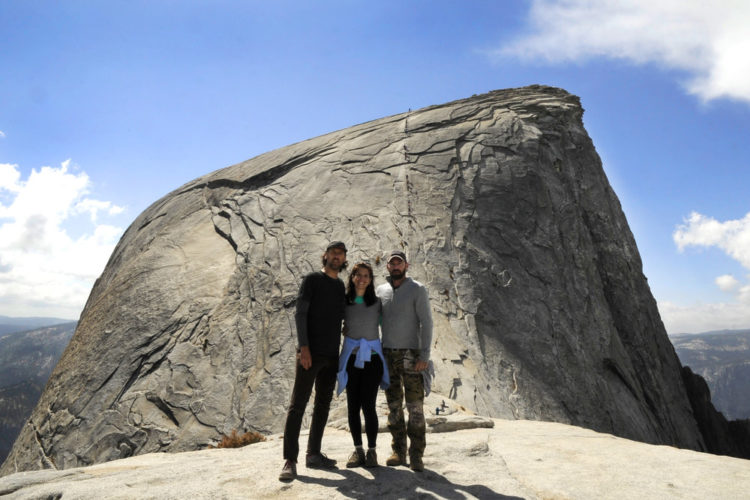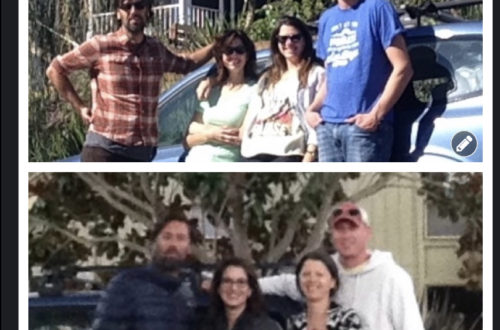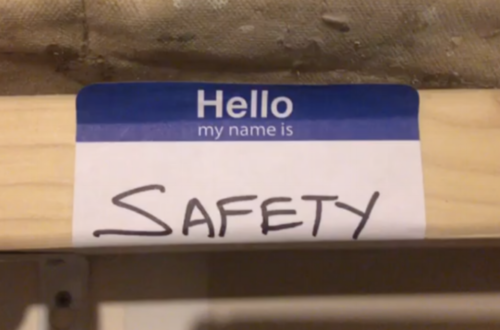
The Forty Percent Rule
It has been said that the worst part of Navy SEAL training is Hell Week, which is five and a half days of physical training for twenty hours a day, running over 200 miles, and extreme mental fuckery. The purpose of this training is to break you, and to weed out those who are unfit to endure. From surviving these experiences, SEALs have devised the Forty Percent Rule. “When your mind is telling you that you have no more strength and you have hit the bottom, your body is only forty percent done.” That extra elusive sixty percent comes from our sheer will in overcoming our thoughts.
On a much milder scale, Yosemite National Park’s Half Dome Trail proved this to me. This adventure is eighteen miles round trip- nine miles and eight hours of climbing to the pinnacle, 5000 feet of elevation gained and lost, nine miles and four hours of excruciating, pounding downhill back to the valley.
The planning for this “walk” was minimal. My brother Sean was visiting Pennsylvania for my parent’s birthdays. While lounging in the sun at their party and discussing our upcoming trip to California, Sean said, “Yeah, I heard about this really cool hike to Half Dome.” Nodding in unison, James and I said, “That sounds great.”
The numbers were thrown around without their full meaning consciously registering. What is 5000 feet in elevation? I get it, it’s up, WAY up. How far is eighteen miles anyway? Six three-mile walks with the dog. That’s doable…
We fly into Los Angeles and travel five hours from to Yosemite. We camp at Housekeeping Camp, which is sprawled alongside the Merced River in the middle of the Valley. The camp features three-sided concrete structures with canvas roofs, privacy curtains, and bear boxes. We start at 7 am with the boys groggily stuffing their packs pre-coffee, with flat affects and blunt emotions. I am contrastingly cheerful and talkative, flitting about, enjoying the morning light, saying, “Come on guys, we’re just going for a reeeeeeeally long walk!”
We hike in the order of our fitness.
Sean is the most cardiovascularly and physically capable. He is a cyclist who routinely bikes fifty miles. Plodding along ahead of us, he steadily climbs, methodical and silent. Bascially, he is free of both physical and mental issues.
James is next, quietly carrying eighteen pounds of photography equipment in addition to necessities. He remembers everything I forget. I need chapstick? A tube appears from his side pocket. My nose is chapped from wiping it with tissues? He produces an extra handkerchief with a flourish. Blisters form on my feet? His stash of moleskin comes to the rescue.
Unknown to Sean and I, James is suffering from a hip flexor strain that began about one hour into the hike. When he finally mentions it, he is concerned about making it to the top. He is hiking with his thumb in his left pants pocket pressing down on his thigh, which seems to relieve the pain slightly. With each step up (and according to my Fitbit, there were 25,000 up and then 25,000 down), he pulls his pant leg which assists in lifting his leg. James isn’t one to complain and can deal with an amazing amount of discomfort. He has to be hurting if he is talking about it.
I follow last. Physically, I am having a hard time, but trying not to show my weaknesses. Having Type 1 Diabetes, I routinely stop to check my blood sugar so that I maintain the often-elusive 80 to 180 range. I chew glucose tablets when my sugar drops below 80 to avoid the exhaustion and physical shutdown that comes with hypoglycemia. When needed, I program my insulin pump to release additional insulin to reduce a drowsy hyperglycemia. For 18 miles, my diabetes and I dance this intensified medical tango.
The Half Dome Trail is the ultimate Yosemite day hike – the one you can’t die without doing, and the one you’re most likely to die while doing. It starts in the Yosemite Valley and follows the Mist Trail along the Merced River. It winds passed Vernal Fall with a drop of 350 feet and Nevada Fall with a drop of 600 feet. After walking through Little Yosemite Valley, you summit the Sub dome, and then climb the cables to the top of Half Dome.
A permit is necessary to access the cable section. Our permit is awarded through a lottery that issues 50 permits per day, two days in advance.
While climbing the sub-dome eight hours into the hike, I panic when I look over my shoulder and see only sheer vertical granite slabs dropping to the valley floor. At this moment, I realize that we have to climb down that extremely steep slope face-forward. Scrambling above the dramatic drop terrifies me and freezes me in place. Other hikers are bounding down the face and I am amazed by their cavalier attitude. I sit down, lean into the warm granite slab, and try to collect myself. I refuse to give into tears. I lean into the slope to steady myself and try to talk myself out of my fear. At that point, I hit my mental wall.
Sean and James alternately say, “we can turn back”, “we don’t have to go to the top”, “we don’t need to be heroes”, “it’s really ok.” But I SEE it. I SEE the top from where I sit. I said repeatedly how desperately I want to stand there and look down at the world. James gently jokes about my being stubborn, which is a well-known flaw/strength/flaw of mine. My edge-of-tears, quivering response is, “That quality is the only thing keeping me going right now.” I steady myself as I stand up, call on my extra sixty percent and focus on making my feet climb upward.
Twenty minutes later, we reach the summit of the sub-dome and our trials fade into a victorious rush. The views are unparalleled. You can see the curve of the earth. In every direction, there is fear and exhilaration and death and life and breathlessness and pure air.
There is also a lightning storm approaching. In other words, an immediate retreat from the sub-dome is necessary. Climbing the metal cables to the very top of Half Dome isn’t going to be possible.
The most famous, or infamous, part of the hike is the ascent of the last 400 feet at 60 degree ascent up the cables to the summit. The Half Dome cables usually go up around Memorial Day and come down around Columbus Day. The park service inserts steel poles into holes drilled at roughly 10-foot intervals. The poles are strung with metal cables spaced roughly 30-inches apart. This distance is small enough to grasp each cable with each hand, but large enough to let two people to squeeze past one another. Wooden boards are laid flat between each set of poles, offering hikers solid footholds.
Since 1919, only a few people have fallen and died on the cables. However, injuries are not uncommon for those acting irresponsibly. Tens of thousands of people have ascended the cables with no incident.
Furtively glancing in the direction of the storm, we allow ourselves five minutes to soak in the experience, to enjoy the triumph of the moment, and to take pictures and video. Fulfilled, we head down the mountain towards safety. More than me, the boys feel the disappointment of the unclimbed cables. Ultimately, we are all euphoric about our accomplishment.
The initial descent proves to be much lighter. We are happy to be going down instead of up. Miraculously, we transform into those giddy, skipping, descending hikers. We are pumped full of epinephrine and feel none of our aches…
… for a while. The scenery was stunning, but the pain-killing characteristic of adrenaline wears off. I realize that we still have half of the hike to conquer and that ‘down’ is in no way easier than ‘up’. The descent presents its own problems. By the bottom of the steepest section, my knees feel like the bones are scraping together. I can barely walk. Sean and James split the contents of my backpack to lighten my load. Luckily, Sean brought walking poles which I lean on heavily with each step. Unlike going up, there isn’t a spectacular carrot at the end of the stick at the bottom, unless you count alcohol, pizza, and sleep. We feel every single step fully. The eight miles down seem endless.
Again, remembering the Forty Percent Rule is helpful. It blocks the discomfort and focuses me on finishing the journey. I learn that I could do more than I thought. The SEALS know the mentally strong make it through and a focused mind gives you an edge. The strongest guys don’t always make it. It has nothing to do with your physical size or strength. Anyone can do anything if they believe they can.
I don’t exaggerate the experience we have. The difficulty of the hike and the steepness of the sub-dome is daunting. I’m not comparing this experience to SEAL training, but it did make me believe in the Forty Percent Rule. This hike is the hardest thing I have done in my lifetime. Without the driving will to get to the top, I would have stopped only a few miles in.
‘Strength does not come from physical capacity. It comes from an indomitable will.’ Mahatma Gandhi


You May Also Like

California Dreamin’
November 25, 2020
Happy Birthday, Sean!
December 13, 2018
